Germany’s Rheinmetall Boxer 8×8 Combat Reconnaissance Vehicle wins Australia’s Land 400 contract
Rheinmetall and Australian partners to supply 211 vehicles for an initial Au$5.2 billion, rising to Au$15.7 billion over 30-year lifespan
Rheinmetall’s Boxer 8×8 Combat Reconnaissance Vehicle has won Australia’s Land 400 Phase 2 Project contract, a Au$5.2 billion ($4.1 billion) acquisition that is the largest ever for the Australian Army.
“The Government will spend $5.2 billion to acquire the 211 vehicles, which will replace the Army’s current ageing Australian Light Armoured Vehicle fleet,” a joint press release from Australia’s Prime Minister Malcolm Turnbull, Minister for Defence Marise Payne and Minister for Defence Industry Christopher Pyne MP said.
“Over the 30-year life of the vehicles, Australian industry will secure two thirds, or $10.2 billion, of the total investment in acquiring and maintaining the fleet, creating up to 1,450 jobs right across Australia,” the government release added.
Au$2.8 billion ($2.2 billion) of the acquisition cost will be spent on Australian content, including Australian steel. Speaking on Wednesday, Minister for Defence Industry Christopher Pyne said that 70 percent of the Au$15.7 billion ($12.4 billion) total spend over 30 years will be in Australia.
“This is the largest single acquisition that has been made for the Australian Army and it is part of our $200 billion re-equipping of the Australian Defence Force,” Prime Minister Malcolm Turnbull said at the announcement.

Three-year tender and testing process
The tender-winning 8×8 Boxer CRV is a variant of the Boxer infantry fighting vehicle used by Germany’s Bundeswehr.
The CRV’s two-person LANCE modular turret is fitted with Rheinmetall’s Mk30-2 30mm automatic cannon, and holds 200 rounds of two different ammunition types for the main weapon which can be resupplied from inside the vehicle. LANCE uses a digital fire-control system and has two electro-optical sights each equipped with a high-resolution camera, a thermal imaging camera and a laser rangefinder.
Rheinmetall says the modular turret contains “advanced systems to automatically detect, characterise and track threats on the battlefield,” and features air-burst cannon technologies. It can be fitted with a anti-tank guided missile system as well as non-lethal systems including a 66mm or 76mm smoke grenade launcher.
The vehicle features a multi-wall protection system consisting of spaced and sloped armour and is designed for reduced radar and infrared signatures. It has permanent eight-wheel-drive and four-wheel steering. Its tires are equipped with run-flat elements and a central tire inflation system.
Boxer CRV variants developed include infantry fighting vehicle, armoured personnel carrier, battlefield ambulance, combat engineer vehicle, logistics carrier, battle damage repair, command and control version, and crew/driving-training.
The government release said the selection of the Rheinmetall Boxer is the result of a “comprehensive three-year tender and rigorous testing process, which assessed its Boxer CRV as the most capable vehicle for the Australian Defence Force.” Rheinmetall beat a BAE Systems proposal that was built on a vehicle made by Finland’s Patria and included ATK weaponry.
“This has been a three year process of rigorous testing, rigorous trialing of the contenders in the Land 400 program,” Minister for Defence Marise Payne said. “We’ve put them in the heat. We’ve put them in the cold. We put them in the wet. We put them in the dry. We shot at them, we tried to blow them up. The outcome of that assessment is that this is the capability to provide the mobility, the lethality and the protection that will support the men and women of the ADF in doing the job that we ask them to do every day.”

Export-focused military vehicle center to be established
“To deliver the project, Rheinmetall will establish a state of the art Military Vehicle Centre of Excellence (MILVEHCOE) near Brisbane in partnership with the Queensland State Government,” a Rheinmetall press release said. “The MILVEHCOE will serve as the focal point for the execution of the program and a base for the establishment of an export orientated military vehicle industrial complex in Australia. The MILVEHCOE will support the Australian Governments Defence Export Strategy.”
“The MILVEHCOE will allow Rheinmetall to transfer cutting edge technologies to Australia in the areas of military vehicle design, production, turret systems, sensors, survivability, simulation and through life support,” the Rheinmetall release added.
The center will also “enrich the economy in the high technology advanced manufacturing sector and broaden employment in defence across the nation. In doing so, we will create a strong sovereign military vehicle industry that allows Australian companies to innovate, compete and win globally,” said Gary Stewart, Managing Director of Rheinmetall Defence Australia.
Rheinmetall Defence Australia identified more than 40 Australian companies to “form part of a globally competitive military vehicle industry,” including MILSPEC and Bisalloy from New South Wales, Supashock from South Australia, Nioa and Penske from Queensland, Direct Edge from Tasmania, Supacat, Tectonica and Cablex from Victoria, and Hoffman Engineering from Western Australia.


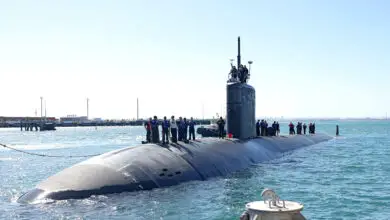

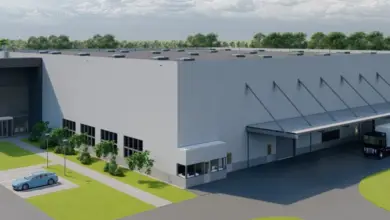
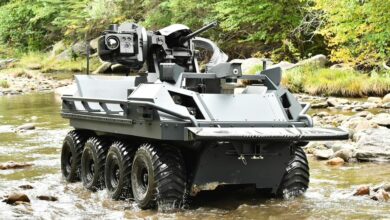

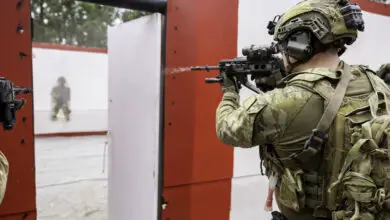

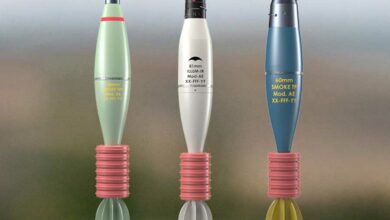

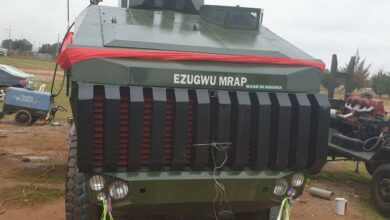
3 Comments